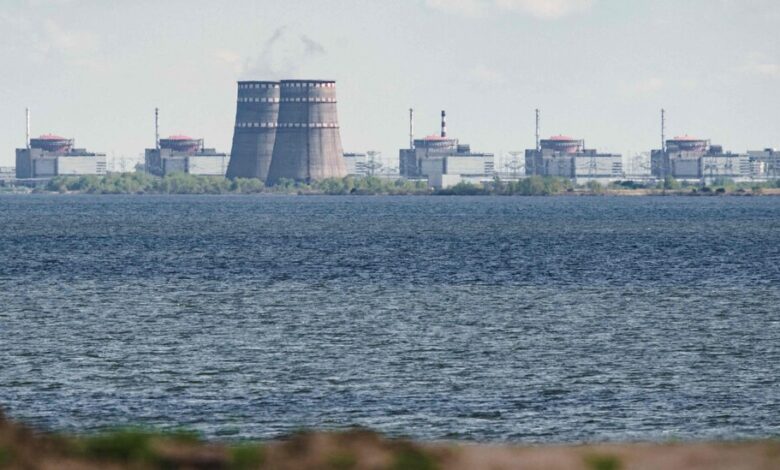U.N. experts head to the Zaporizhzhia facility on a risky mission after weeks of talks.

The International Atomic Energy Agency said on Monday that it was dispatching a team of experts to inspect a nuclear complex in southern Ukraine that has been imperiled by shelling, launching a crucial but highly risky mission to ease global fears of a nuclear catastrophe.
After weeks of contentious negotiations involving Russia, whose forces occupy the Zaporizhzhia Nuclear Power Plant, and Ukraine, whose engineers are keeping it running amid near-daily artillery strikes in the area, the head of the United Nations’ nuclear watchdog agency announced that the inspectors were “on their way” and would reach the site later this week.
Both Russia and Ukraine welcomed the announcement by the I.A.E.A. director general, Rafael M. Grossi, even as they repeated accusations that the other side was responsible for the shelling. Mr. Grossi did not specify how the mission would reach Zaporizhzhia, which is Europe’s largest nuclear facility, a sprawling complex of six light-water reactors, cooling towers, machine rooms and radioactive waste storage sites.
If the inspectors travel through Ukrainian territory to reach the plant, which is located along the Dnipro River in a part of southern Ukraine controlled by Russian forces, they would become one of the few international missions to cross the front line during the six-month war.
The I.A.E.A. has said that at Zaporizhzhia its team would check on safety systems, assess damage to the plant and evaluate the staff’s working conditions. Among the main concerns is that fires or other damage could cause cooling systems to fail and lead to a nuclear meltdown.
But the agency did not immediately disclose the timing of the visit or security arrangements, a sign of the complexities and dangers of the mission, even for an agency that has monitored nuclear sites in Iran, North Korea and other challenging locations.
Russia’s envoy to the I.A.E.A., Mikhail Ulyanov, said that Moscow would facilitate the visit, and that the agency has signaled that it intends to station some experts at the Zaporizhzhia complex “on a permanent basis,” the state news agency RIA Novosti reported.
Dmytro Kuleba, Ukraine’s foreign minister, said on Monday that he expected the I.A.E.A. experts would conclude that Russia was putting “the entire world at risk of nuclear accident,” and repeated Ukraine’s calls for Moscow to withdraw its forces from the plant.
The area where the plant is located has seen some of the most intense recent fighting in the war, as strikes along the entire southern front line hit ammunition depots, towns and military bases. The plant has come under sporadic shelling since early August, although the extent of the damage to it remains unclear.
Last week, after fighting severed a high-tension electrical line, the Zaporizhzhia facility was temporarily disconnected from the nation’s power grid for the first time, Ukrainian officials said. Operators implemented emergency procedures to cool the reactor cores with pumps powered by diesel generators, but the event underscored the extreme danger posed by nearby fighting.
Plant employees and outside experts say an artillery strike would not penetrate the yard-thick reinforced concrete of the containment vessels over the six reactors, but could damage the reactors’ supporting equipment or spark fires that could burn out of control. Artillery strikes could also breach less robust containers used to store spent nuclear fuel.
Fears of a possible radiation leak if the plant is further damaged have prompted Ukrainian officials to start distributing potassium iodide, a drug that can protect against some radiation poisoning, to people living within 35 miles of the plant.
On Monday, Dmytro Orlov, the exiled mayor of Enerhodar, the Russian-occupied town near the plant, said that two neighborhoods in the city were hit by shelling overnight that he blamed on Russian forces. Energoatom, the Ukrainian nuclear energy company, said that the Russian shelling had wounded 10 residents of Enerhodar, including four employees of the plant.
Negotiations to allow I.A.E.A. inspectors access went on for weeks, with Russia reportedly insisting that inspectors travel through Russian territory to access the plant. Ukraine objected because that would have underscored Russian control over the facility, which provides 20 percent of Ukraine’s electricity.




